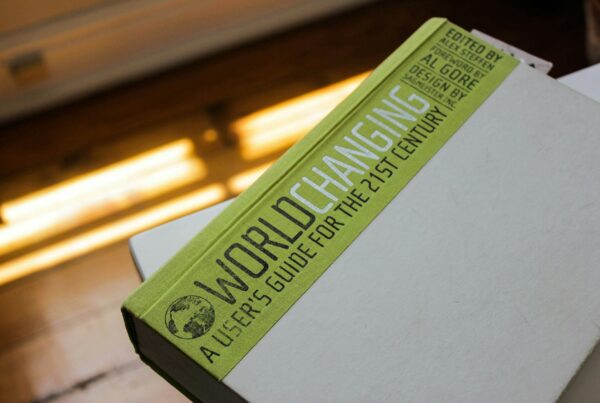
Physical intimacy is one of the most arcane forms of connection we have in an era of technology. In a world where everything happens a bit too fast, and where distances mean almost nothing, one might think that we can do just fine without physical intimacy. But the reality is we can’t: This connection goes far beyond just touching someone. It is the act of relaying emotions, shared experiences, and vulnerability that attaches so much meaning to this form of intimacy.
Physical intimacy is one of the most arcane forms of connection we have in an era of technology. In a world where everything happens a bit too fast, and where distances mean almost nothing, one might think that we can do just fine without physical intimacy. But the reality is we can’t: This connection goes far beyond just touching someone. It is the act of relaying emotions, shared experiences, and vulnerability that attaches so much meaning to this form of intimacy.

Illustration by Nina Kollof

Illustration by Nina Kollof
Think of your ‘first’ first date. The one where you did not know where to put your hands. And the one with the weird side hug, because you were nervous out of your mind. And yet the hug made you feel a bit calmer yet so much better. This physical form of connection is something that we instinctively crave, not something we learn from books. It also signifies so much more than just embracing the one you love, it is a declaration of trust; a conversation only possible between two partners. Intimacy is built from disclosing our true selves to our partner, and their reciprocation of vulnerability displays the ultimate form of trust (Khafilian & Barry, 2019). It is safe to say that physical intimacy is something we need, and exploring it gives us insight into how it affects the way we form relationships.
A rather unsuspecting benefit of physical intimacy is how it improves our health, primarily by manipulating the presence of certain hormones. Research shows that couples that spend more time being intimate have lower salivary cortisol levels compared to couples who don’t (Ditzen et al., 2008). It is also evident that the ‘love hormone’ oxytocin increases with physical affection, as pointed out by Schneiderman et al. (2014) among other influencial factors. In addition, physical intimacy also has an effect on the cardiovascular system. A study looking at the relationship between being stroked on the forearm and heart ratefound that the person stroked consistently by their significant other reported higher pleasantness ratings compared to them stroking someone else (Triscoli et al. 2017). They also observed a decline in heart rate when being stroked by a significant other . This effect was further enhanced when relationship satisfaction was higher, suggesting that the health benefits of physical intimacy also come from the sense of trust that builds from it.
“It also signifies so much more than just embracing the one you love, it is a declaration of trust; a conversation only possible between two partners.”
It seems that physical intimacy plays a mediating role in many factors linked with relationship satisfaction. One such case is the relationship between attachment style and marital satisfaction. In a study investigating the association between attachment and touch satisfaction, based on the frequency and quality of touch. In this study, husbands with greater attachment anxiety were less satisfied with touch, as if they were trying to make sure that their partner was still there (Wagner et al., 2020). Moreover, wives with greater avoidance had partners with less touch satisfaction. Simply put, anxiously-attached husbands had lower positive responses to touch from their partners because they wanted more touch than they get for reassurance. Avoidant wives, in this case, do not touch their partners enough, which causes their partners to complain about not being satisfied. This alludes to a possible mediating effect of touch between anxiety and marital satisfaction, drawing to the clear importance of physical intimacy for relationship satisfaction.
Interestingly so, the lack of physical intimacy is not a problem only for couples, but for single people as well. While there are factors such as increased individualism and side effects of technology at play, another case for the recent rise in the lack of physical intimacy seemingly stems from the rising depression rate in millennials and Gen Z. Twenge (2020) found that for the generation born between 1995-2012, major depressive episodes for American girls increased by 52%. For the same generation, the percentage of young adults not having a sexual partner in the last 12 months increased from 22% in 2011 to 38% in 2021 (Reese, 2023). This is not limited to single adults as well, an increasing number of millennial couples report “dry spells” (Klein, 2022). Lehmiller (2022) points out the interesting connection between the rising rates of depression and the drop in the young generation having sex and argues this might not be a spurious correlation. In line with his interpretation of this phenomenon, more people become less likely to have any physical intimacy due to various factors, for example lifestyle changes or depression, which fuels the loop, further reinforcing the negative feedback loop. A study points out the mood-boosting effect of having physical intimacy, and a study based on diary entries report more positive mood states and an improved meaning in life that lasted longer with physical intimacy (Kashdan et al., 2018). The link may be complex; however, it is evident that there is a relationship between lack of physical intimacy and depression.
“The link may be complex; however, it is evident that there is a relationship between lack of physical intimacy and depression.”
Even though there are more variables at play such as loneliness and insecurity, it seems that physical intimacy is not only needed to maintain relationship satisfaction, but we require physical intimacy for our mental health as well. The relationship between trust and physical intimacy in a relationship is prevalent in improving the relationship, however the amount of physical intimacy required to sustain it may differ between people. Being so, it may seem daunting to meet the needs of your partner, but as a reminder; it does not have to be as big as you think. Nonsexual acts of intimacy, such as cuddling, hugging and backrubs, are also shown to improve relationship and partner satisfaction in couples (Gulledge et al., 2006). Hugs are always free to give, and they don’t bite! <<
References
– Ditzen, B., Hoppmann, C., & Klumb, P. (2008). Positive couple interactions and daily cortisol: On the stress-protecting role of intimacy. Psychosomatic Medicine, 70(8), 883–889. https://doi.org/10.1097/psy.0b013e318185c4fc
– Gulledge, A. K., Gulledge, M. H., & Stahmannn, R. F. (2003). Romantic physical affection types and relationship satisfaction. The American Journal of Family Therapy, 31(4), 233–242. https://doi.org/10.1080/01926180390201936
– Kashdan, T. B., Goodman, F. R., Stiksma, M., Milius, C. R., & McKnight, P. E. (2018). Sexuality leads to boosts in mood and meaning in life with no evidence for the reverse direction: A daily diary investigation. Emotion, 18(4), 563–576. https://doi.org/10.1037/emo0000324
– Khalifian, C. E., & Barry, R. A. (2019). Expanding intimacy theory: Vulnerable disclosures and partner responding. Journal of Social and Personal Relationships, 37(1), 58–76. https://doi.org/10.1177/0265407519853047
– Klein, J. (2022, December 13). The millennials in sexless marriages. BBC News. https://www.bbc.com/worklife/article/20221019-the-millennials-in-sexless-marriages
– Lehmiller, J. (2022). Generation Z is missing out on the benefits of sex. Psychology Today. https://www.psychologytoday.com/intl/blog/the-myths-sex/202209/generation-z-is-missing-out-the-benefits-sex
– Reese, P. (2023, May 23). Young people are having less sex than their parents did at their age. researchers explore why. KFF Health News. https://kffhealthnews.org/news/article/young-people-less-sex-than-parents-did-at-their-age-generational-shift-asexual/
– Schneiderman, I., Zagoory-Sharon, O., Leckman, J. F., & Feldman, R. (2012). Oxytocin during the initial stages of romantic attachment: Relations to couples’ interactive reciprocity. Psychoneuroendocrinology, 37(8), 1277–1285. https://doi.org/10.1016/j.psyneuen.2011.12.021
– Sorokowska, A., Kowal, M., Saluja, S., Aavik, T., Alm, C., Anjum, A., Asao, K., Batres, C., Bensafia, A., Bizumic, B., Boussena, M., Buss, D. M., Butovskaya, M., Can, S., Carrier, A., Cetinkaya, H., Conroy-Beam, D., Cueto, R. M., Czub, M., … Croy, I. (2023). Love and affectionate touch toward romantic partners all over the world. Scientific Reports, 13(1). https://doi.org/10.1038/s41598-023-31502-1
– Triscoli, C., Croy, I., Olausson, H., & Sailer, U. (2017). Touch between romantic partners: Being stroked is more pleasant than stroking and decelerates heart rate. Physiology & Behavior, 177, 169–175. https://doi.org/10.1016/j.physbeh.2017.05.006
– Twenge, J. M. (2020). Increases in depression, self‐harm, and suicide among U.S. adolescents after 2012 and links to technology use: Possible mechanisms. Psychiatric Research and Clinical Practice, 2(1), 19–25. https://doi.org/10.1176/appi.prcp.20190015
– Wagner, S. A., Mattson, R. E., Davila, J., Johnson, M. D., & Cameron, N. M. (2020). Touch me just enough: The intersection of adult attachment, intimate touch, and marital satisfaction. Journal of Social and Personal Relationships, 37(6), 1945–1967. https://doi.org/10.1177/0265407520910791
Think of your ‘first’ first date. The one where you did not know where to put your hands. And the one with the weird side hug, because you were nervous out of your mind. And yet the hug made you feel a bit calmer yet so much better. This physical form of connection is something that we instinctively crave, not something we learn from books. It also signifies so much more than just embracing the one you love, it is a declaration of trust; a conversation only possible between two partners. Intimacy is built from disclosing our true selves to our partner, and their reciprocation of vulnerability displays the ultimate form of trust (Khafilian & Barry, 2019). It is safe to say that physical intimacy is something we need, and exploring it gives us insight into how it affects the way we form relationships.
A rather unsuspecting benefit of physical intimacy is how it improves our health, primarily by manipulating the presence of certain hormones. Research shows that couples that spend more time being intimate have lower salivary cortisol levels compared to couples who don’t (Ditzen et al., 2008). It is also evident that the ‘love hormone’ oxytocin increases with physical affection, as pointed out by Schneiderman et al. (2014) among other influencial factors. In addition, physical intimacy also has an effect on the cardiovascular system. A study looking at the relationship between being stroked on the forearm and heart ratefound that the person stroked consistently by their significant other reported higher pleasantness ratings compared to them stroking someone else (Triscoli et al. 2017). They also observed a decline in heart rate when being stroked by a significant other . This effect was further enhanced when relationship satisfaction was higher, suggesting that the health benefits of physical intimacy also come from the sense of trust that builds from it.
“It also signifies so much more than just embracing the one you love, it is a declaration of trust; a conversation only possible between two partners.”
It seems that physical intimacy plays a mediating role in many factors linked with relationship satisfaction. One such case is the relationship between attachment style and marital satisfaction. In a study investigating the association between attachment and touch satisfaction, based on the frequency and quality of touch. In this study, husbands with greater attachment anxiety were less satisfied with touch, as if they were trying to make sure that their partner was still there (Wagner et al., 2020). Moreover, wives with greater avoidance had partners with less touch satisfaction. Simply put, anxiously-attached husbands had lower positive responses to touch from their partners because they wanted more touch than they get for reassurance. Avoidant wives, in this case, do not touch their partners enough, which causes their partners to complain about not being satisfied. This alludes to a possible mediating effect of touch between anxiety and marital satisfaction, drawing to the clear importance of physical intimacy for relationship satisfaction.
Interestingly so, the lack of physical intimacy is not a problem only for couples, but for single people as well. While there are factors such as increased individualism and side effects of technology at play, another case for the recent rise in the lack of physical intimacy seemingly stems from the rising depression rate in millennials and Gen Z. Twenge (2020) found that for the generation born between 1995-2012, major depressive episodes for American girls increased by 52%. For the same generation, the percentage of young adults not having a sexual partner in the last 12 months increased from 22% in 2011 to 38% in 2021 (Reese, 2023). This is not limited to single adults as well, an increasing number of millennial couples report “dry spells” (Klein, 2022). Lehmiller (2022) points out the interesting connection between the rising rates of depression and the drop in the young generation having sex and argues this might not be a spurious correlation. In line with his interpretation of this phenomenon, more people become less likely to have any physical intimacy due to various factors, for example lifestyle changes or depression, which fuels the loop, further reinforcing the negative feedback loop. A study points out the mood-boosting effect of having physical intimacy, and a study based on diary entries report more positive mood states and an improved meaning in life that lasted longer with physical intimacy (Kashdan et al., 2018). The link may be complex; however, it is evident that there is a relationship between lack of physical intimacy and depression.
“The link may be complex; however, it is evident that there is a relationship between lack of physical intimacy and depression.”
Even though there are more variables at play such as loneliness and insecurity, it seems that physical intimacy is not only needed to maintain relationship satisfaction, but we require physical intimacy for our mental health as well. The relationship between trust and physical intimacy in a relationship is prevalent in improving the relationship, however the amount of physical intimacy required to sustain it may differ between people. Being so, it may seem daunting to meet the needs of your partner, but as a reminder; it does not have to be as big as you think. Nonsexual acts of intimacy, such as cuddling, hugging and backrubs, are also shown to improve relationship and partner satisfaction in couples (Gulledge et al., 2006). Hugs are always free to give, and they don’t bite! <<



